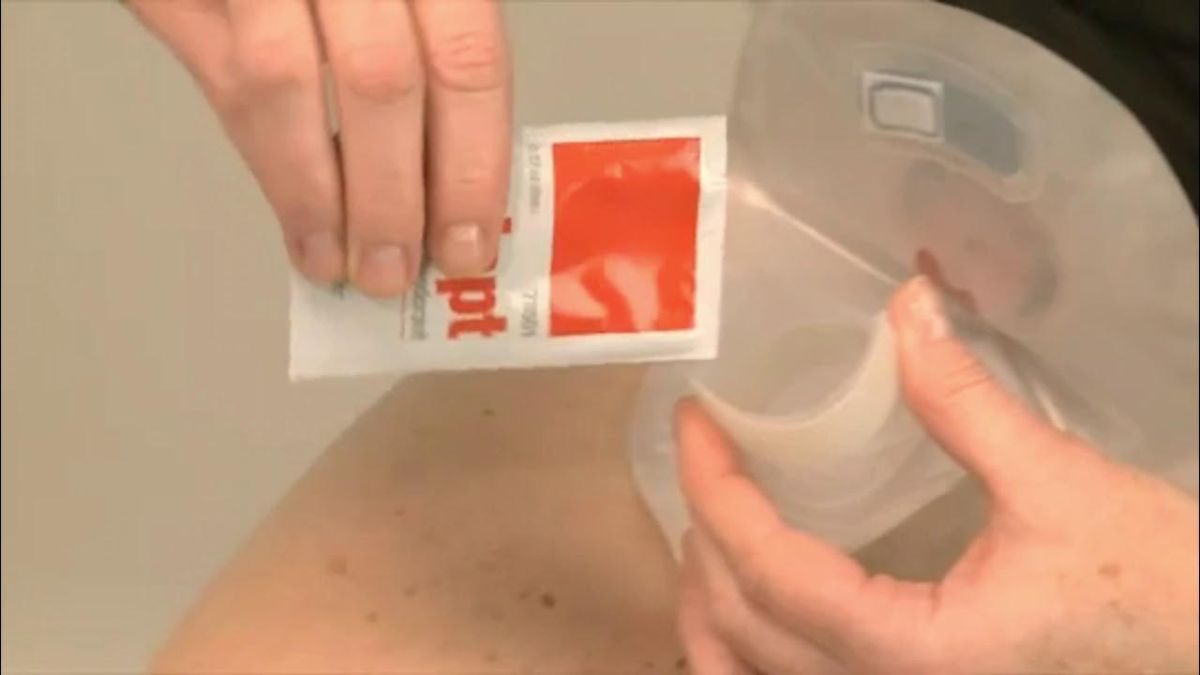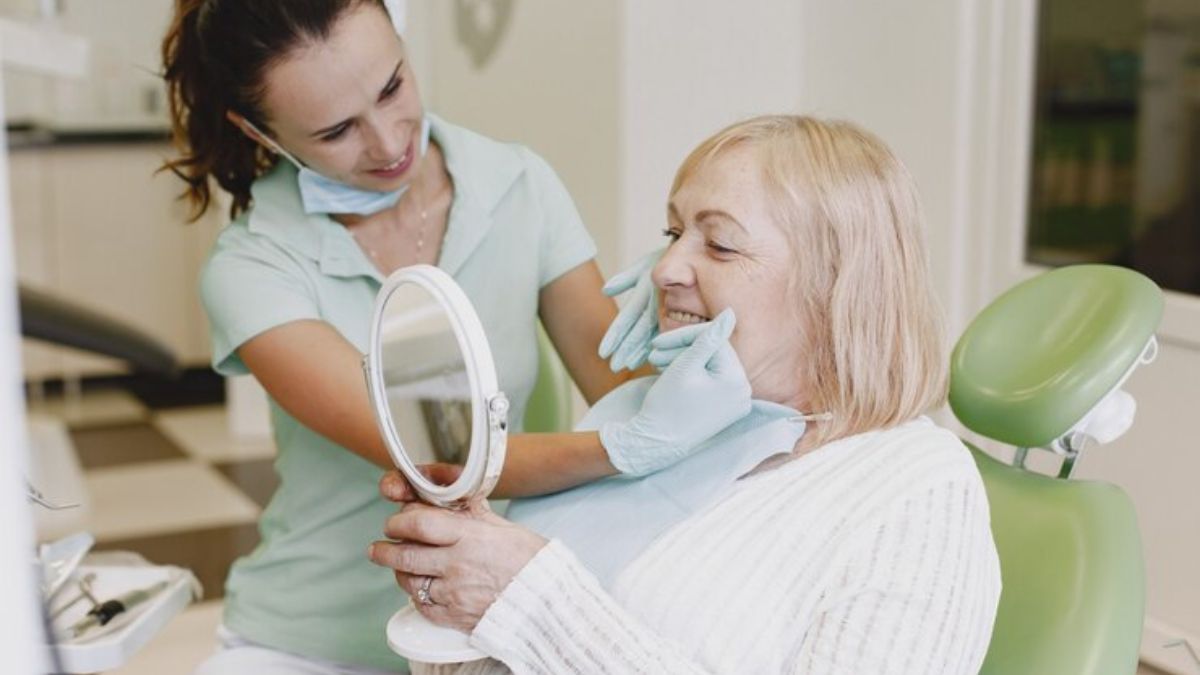HEALTH
How to Use Lubricating Deodorant for Ostomy Pouches?

Living with an ostomy involves various challenges, from managing the physical aspects to addressing emotional and social concerns. One of the primary issues many ostomy patients face is odor control, which can significantly affect confidence and comfort.
Lubricating deodorants for ostomy pouches are designed to tackle this problem, offering dual benefits: odor elimination and easy pouch emptying. We will discuss below how to use lubricating deodorants effectively, and how it enhances the quality of life for ostomy patients by addressing practical concerns with simple, actionable steps.
Understanding Lubricating Deodorants
To understand lubricating deodorants, it is important to know what are they and why they are used.
What are Lubricating Deodorants?
Lubricating deodorants are specially formulated for use with ostomy pouches, offering a dual benefit: odor neutralization and pouch lubrication. By neutralizing odors, these products help manage one of the primary concerns of ostomy patients, ensuring greater comfort and confidence. The lubrication aspect makes waste move more smoothly within the pouch, facilitating easier and cleaner emptying.
This lubrication also helps reduce the likelihood of blockages and residue buildup, enhancing the overall functionality of the ostomy pouch. Regular use of lubricating deodorants can significantly improve the day-to-day management of an ostomy, promoting better hygiene and convenience. Thus, these products play a crucial role in enhancing the quality of life for those with an ostomy.
Why Use Lubricating Deodorants?
Using lubricating deodorants helps manage the odor associated with ostomy output, addressing a common concern for many patients. These products effectively neutralize unpleasant smells, enhancing comfort and confidence. The lubricating properties of these deodorants ensure that waste can be emptied from the pouch more easily and cleanly, preventing residue buildup.
This not only simplifies the emptying process but also reduces the risk of leaks by ensuring a smoother flow of waste. Regular use of lubricating deodorants promotes better hygiene and convenience, significantly improving the overall experience of living with an ostomy. Consequently, these products play a vital role in enhancing the quality of life for ostomy patients.
Types of Lubricating Deodorants
Liquid Lubricating Deodorants
Liquid lubricating deodorants are easy to pour and distribute evenly within the ostomy pouch. They are typically used by squeezing a measured amount directly into the pouch, ensuring comprehensive coverage. These liquids are highly effective in neutralizing odors and providing smooth lubrication. Their consistency allows for quick and easy application, making them a convenient choice for many users.
Gel Lubricating Deodorants
Gel lubricating deodorants have a thicker consistency than liquids, which can provide longer-lasting effects. The gel form adheres well to the interior of the pouch, ensuring that the deodorant stays in place and continues to work effectively over time. Gels are particularly useful for those who need a more substantial barrier against odors and prefer a product that does not move around as much. This type is ideal for those seeking both durability and ease of use.
Spray Lubricating Deodorants
Spray lubricating deodorants offer a quick and convenient application method, ideal for users who prefer a hands-off approach. By simply spraying the deodorant into the pouch, it distributes evenly without the need for direct contact. Sprays can be particularly beneficial for those with limited mobility or dexterity. This form is also useful for quick refreshes throughout the day, providing immediate odor control and lubrication.
Preparing to Use Lubricating Deodorants
Choosing the Right Product
Selecting the appropriate lubricating deodorant is crucial. Consider factors such as the product’s formulation, scent, and compatibility with your specific type of ostomy pouch. Consulting with a healthcare provider or ostomy nurse can help in making an informed choice.
Reading the Instructions
Before using any new product, it is essential to read the manufacturer’s instructions carefully. This ensures that you are using the product correctly and effectively. Pay attention to any specific guidelines regarding the amount to use and the method of application.
Gathering Supplies
Ensure you have all necessary supplies at hand, including the lubricating deodorant, clean wipes or tissues, and your ostomy pouch. Having everything prepared will make the process smoother and more efficient.
Applying Lubricating Deodorants
Step-by-Step Application:
Empty the Pouch
Before applying the deodorant, ensure the ostomy pouch is empty. This can be done by gently squeezing the contents into a toilet. Emptying the pouch first ensures that the deodorant can be effectively distributed and that there is no interference from residual waste. This step is crucial for maintaining hygiene and preparing the pouch for optimal deodorant application.
Apply the Deodorant
Squeeze the recommended amount of deodorant, typically around 5-10ml (1-2 teaspoons), directly into the empty pouch. To ensure even distribution, gently squeeze and roll the pouch so that the deodorant spreads throughout the interior surface. This step maximizes the deodorant’s effectiveness in neutralizing odors and providing lubrication.
Reattach the Pouch
After applying and distributing the deodorant, securely reattach the pouch to your ostomy system. Make sure there are no leaks or gaps in the seal, as this can lead to discomfort and potential odor escape. Ensuring a proper seal is essential for maintaining confidence and comfort throughout the day.
Regular Use and Maintenance
For ongoing odor control and lubrication, it is advisable to apply the deodorant after each pouch emptying. Regular application helps keep the pouch clean and odor-free, enhancing comfort and confidence. This routine maintenance is key to effective ostomy management and improving the overall quality of life for ostomy patients.
Tips for Effective Use
Consistent Application
Regular use of lubricating deodorant is essential for managing odors and ensuring the pouch empties easily. By developing a routine that includes applying the deodorant each time you empty the pouch, you can maintain continuous odor control and lubrication. Consistency in application helps prevent residue buildup and keeps the pouch functioning optimally, providing peace of mind and comfort.
Proper Storage
Store lubricating deodorants in a cool, dry place, away from direct sunlight. Proper storage conditions help maintain the efficacy and longevity of the product, ensuring it works as intended whenever you need it. Exposure to heat or sunlight can degrade the product, reducing its effectiveness in odor control and lubrication.
Monitoring for Allergies
While allergic reactions to lubricating deodorants are rare, it’s important to monitor your skin for any signs of irritation or discomfort. If you notice redness, itching, or any other adverse reactions, discontinue use and consult a healthcare professional. Regular monitoring ensures that any potential issues are addressed promptly, maintaining your skin’s health and comfort.
FAQs About Lubricating Deodorants
Can I use any deodorant in my ostomy pouch?
It is important to use deodorants specifically designed for ostomy pouches, as regular deodorants may not be safe or effective. These specialized products are formulated to neutralize odors and provide lubrication without harming the pouch or irritating the skin.
How often should I apply the lubricating deodorant?
Applying deodorant after each time you empty the pouch is recommended to maintain effective odor control and lubrication. This regular application ensures the pouch remains clean, and odor-free, and functions smoothly, enhancing comfort and confidence.
Are there any side effects to using lubricating deodorants?
Most lubricating deodorants are safe and specifically designed for ostomy use. However, if you experience any skin irritation or discomfort, it’s important to discontinue use immediately and consult a healthcare professional for advice.
Can lubricating deodorants prevent leaks?
While they primarily help with odor control and pouch emptying, proper application of lubricating deodorants can contribute to the overall effectiveness of the ostomy appliance, potentially reducing the risk of leaks.
Do lubricating deodorants have a scent?
Some lubricating deodorants come with a mild scent, while others are unscented. Select a product based on your personal preference and specific needs to ensure optimal comfort and satisfaction.
Conclusion
Lubricating deodorants are a valuable addition to ostomy care, providing significant benefits in odor control and ease of pouch management. By understanding how to use these products effectively, ostomy patients can enhance their comfort, confidence, and overall quality of life.
Consistent application, proper storage, and monitoring for any adverse reactions are key to maximizing the benefits of lubricating deodorants. As always, consulting with healthcare professionals can provide personalized advice and support in managing an ostomy effectively.
HEALTH
Dental Savings Plans: A Smart Solution for Seniors and Retirees

Dental Savings Plans: A Smart Solution for Seniors and Retirees
As we age, maintaining good oral health becomes more important than ever. However, for many seniors and retirees, access to affordable dental care can be a challenge. Traditional Medicare often doesn’t cover routine dental services, leaving older adults to shoulder the high costs of dental procedures on their own. This is where dental savings plans come in. For seniors and retirees seeking affordable dental care without the high premiums of traditional insurance, dental savings plans offer a practical, cost-effective solution.
Why Seniors and Retirees Need Affordable Dental Care
The Importance of Oral Health in Later Life
Oral health is closely linked to overall well-being, particularly for older adults. Common dental issues, such as gum disease, tooth loss, and dry mouth, can lead to significant health problems if left untreated. For instance, poor oral health is associated with increased risks of heart disease, diabetes, and respiratory infections. Maintaining a healthy smile is not just about aesthetics—it’s a critical aspect of staying healthy in later years.
Limited Coverage from Traditional Medicare
Unfortunately, many seniors are surprised to learn that traditional Medicare doesn’t cover most dental procedures. Routine cleanings, fillings, crowns, dentures, and even emergency treatments are typically not included in standard Medicare plans. Without dental insurance or other coverage options, retirees are often left to pay out of pocket for these necessary services, which can quickly add up to thousands of dollars.
High Costs of Dental Procedures for Seniors
Dental care can be expensive, especially for seniors who may need more extensive treatments. For example, a dental crown can cost between $800 and $1,500 per tooth, while a set of dentures may run upwards of $4,000. For those on a fixed income, these costs can be prohibitive, leading many to delay or avoid necessary dental care. This is where dental savings plans provide a valuable alternative.
What Are Dental Savings Plans?
How They Differ from Traditional Insurance
Dental savings plans, also known as dental discount plans, are membership-based programs that provide discounted rates on dental services. Unlike traditional insurance, which involves premiums, deductibles, and complicated claims processes, dental savings plans are straightforward. Members pay an annual or monthly fee and receive immediate discounts—often 10% to 60%—on a variety of dental services from participating providers.
There’s no need to worry about insurance claim approvals or coverage limits. You simply show your membership card at participating dentists and receive the discounted rate.
Flexibility and Immediate Benefits for Seniors
One of the biggest advantages of dental savings plans for seniors is their flexibility and ease of use. There are no annual maximums, meaning you can use the plan as much as you need throughout the year. Additionally, unlike dental insurance, which often has waiting periods for major procedures, dental savings plans provide immediate benefits. This is particularly helpful for retirees who may need urgent dental care and don’t want to wait months for insurance coverage to kick in. At Neighborhood Dental in Harrisburg, SD, these plans can offer a practical solution for maintaining oral health without the restrictions of traditional insurance.
Key Benefits of Dental Savings Plans for Seniors
No Waiting Periods or Annual Limits
With dental savings plans, seniors can begin saving on dental care as soon as they enroll—there are no waiting periods. This is a significant benefit compared to traditional insurance plans, which often have waiting periods of six months to a year for major treatments like crowns or root canals. Furthermore, dental savings plans do not impose annual limits on how much you can save. Whether you need one procedure or several, the discounts apply year-round.
Discounts on a Wide Range of Procedures
Dental savings plans cover a broad range of dental services, from routine cleanings and exams to more complex procedures like dentures, bridges, and even dental implants. This makes them an excellent option for seniors who may require a variety of dental treatments over time. Participating dentists typically offer discounts on preventive care, restorative treatments, and even cosmetic procedures, allowing seniors to maintain their oral health without breaking the bank.
Simple Enrollment and Low Monthly Costs
Another benefit of dental savings plans is the simplicity of enrollment. Unlike insurance plans that may require detailed health information or have restrictive eligibility requirements, dental savings plans are open to everyone. Most plans offer affordable monthly or annual fees, making them an accessible option for retirees on a fixed income. The typical cost of a dental savings plan ranges from $100 to $200 per year, significantly lower than the premiums for dental insurance.
How to Choose the Right Dental Savings Plan for You
Factors to Consider When Selecting a Plan
When choosing a dental savings plan, it’s important to consider several factors to ensure it meets your needs. Start by reviewing the list of participating dentists in your area. If you have a preferred dentist, check whether they accept the plan you’re considering. You’ll also want to compare the types of procedures covered and the percentage of discounts offered. Some plans may provide higher discounts on preventive care, while others may focus on major restorative procedures.
Additionally, consider the plan’s cost and payment structure. Some plans offer monthly payments, while others require an annual fee upfront. Make sure the plan you select aligns with your budget and dental care needs.
Comparing Plans to Meet Your Needs
There are many dental savings plans available, and it’s important to compare options to find the one that best fits your situation. Some popular providers include Careington, Aetna, and Cigna. Each plan has its own network of dentists, discount percentages, and coverage for specific procedures, so take the time to research and compare plans. Many dental savings plans also offer customer reviews, which can provide insight into the experiences of other members.
How to Enroll in a Dental Savings Plan
Simple Steps to Get Started
Enrolling in a dental savings plan is a simple process that can be completed online or over the phone. Most plans require basic personal information, including your name, address, and payment details. Once you’ve chosen your plan and completed the enrollment process, you’ll receive a membership card that you can present at participating dental offices to start saving immediately.
What to Expect After Enrollment
After enrolling in a dental savings plan, you’ll have access to discounted dental services at any participating provider. Most plans will provide you with a list of local dentists who accept the plan, making it easy to find a provider near you. If you need dental care soon after enrolling, you can start using your discounts right away—there’s no waiting period.
By staying proactive and keeping up with routine dental visits, seniors and retirees can save significantly on dental care while ensuring they maintain their oral health.
Conclusion: A Practical, Affordable Solution for Seniors
Dental savings plans are a smart, cost-effective option for seniors and retirees who need access to affordable dental care. With no waiting periods, no annual limits, and substantial discounts on a wide range of procedures, these plans provide a valuable alternative to traditional dental insurance. By enrolling in a dental savings plan, older adults can maintain their oral health without the financial burden of high out-of-pocket costs.
Key Takeaways:
- Affordable Alternative to Insurance: Dental savings plans offer immediate discounts and lower costs without the restrictions of traditional insurance.
- Flexible and Accessible: No waiting periods, annual limits, or complicated paperwork make dental savings plans an attractive choice for seniors.
- Simple Enrollment: Seniors can easily enroll in a plan that fits their needs and start saving on dental care right away.
For seniors looking to preserve their smiles and protect their health, dental savings plans are a practical, affordable solution.
HEALTH
Choosing the Right Online Health Management MBA Program

Accreditation Matters
Choosing the right health management MBA online program begins with ensuring it’s accredited. Accreditation is a hallmark of quality, confirming that the program adheres to rigorous academic standards. Accredited degrees are often more respected by employers, providing better job opportunities and boosting your career trajectory. Furthermore, accreditation can determine your eligibility for federal financial aid, making it financially viable to complete your studies. According to the Council for Higher Education Accreditation, accreditation supports student mobility by allowing theChoby cthoby.org Games: A Comprehensive Guide transfer of credits between accredited institutions, which can be crucial if you need to change schools.
Faculty Experience and Expertise
When evaluating an online Health Management MBA program, the faculty’s credentials and real-world experience are key to consider. Engaging with professors with extensive industry experience can provide practical insights that theoretical knowledge alone cannot offer. Reputable institutions like Youngstown State University typically list faculty qualifications and industry involvement on their program pages, helping you assess their capability to deliver a comprehensive, high-quality education. Faculty members who are actively involved in healthcare management can bring the latest industry trends and innovations into the classroom, providing you with an education that is both relevant and actionable.
Program Flexibility
One of the main benefits of an online MBA program is its flexibility. This is especially important for working professionals or those with family commitments. Look for programs that offer asynchronous classes, which allow you to access coursework and lectures at your convenience. Features such as multiple start dates, accelerated tracks, and customizable pacing are essential for balancing work, family, and study. Flexibility in scheduling can make it feasible to attain higher education without compromising your other responsibilities. Additionally, some programs offer the option to pause and resume your studies, providing further flexibility to manage life’s unexpected events.
Curriculum and Specializations
Examining the curriculum and available specializations is crucial to ensure they align with your career aspirations. A well-rounded curriculum should blend core business principles with specialized healthcare management courses. Elective options, capstone projects, and case studies create well-rounded professionals capable of addressing real-world challenges. Ensure the program offers courses that add immediate value to your career and long-term professional goals. For example, health economics, healthcare policy, and patient ethics courses can be particularly beneficial for those looking to take on leadership roles in healthcare settings.
Career Services and Alumni Network
Robust career services and a strong alumni network can be game-changers for your career trajectory post-graduation. Comprehensive career services usually include resume writing workshops, job placement assistance, and networking events. These services help you secure a job and prepare you for long-term career growth. An active alumni network can open doors to new opportunities and provide mentorship from experienced professionals. According to Forbes, engaging with alumni networks can be a critical factor in career advancement, as they often connect graduates to lucrative job opportunities and industry insights. Leveraging these connections can significantly enrich your professional life and quicken your ascent up the career ladder.
Student Support and Resources
Effective student support services can significantly enhance your educational experience, especially in an online learning environment. These services are crucial for ensuring student success, from academic advising to mental health resources and technical support. Academic advisors can help you navigate your educational journey, offering course selection and career path guidance. Mental health resources ensure you have access to necessary care to manage stress and maintain well-being. Comprehensive technical support is essential for resolving issues with accessing course materials or using online learning platforms, allowing you to focus more on your studies. High-quality programs prioritize a holistic support system to help you thrive.
Financial Aid and Cost
Understanding the financial implications of your education is essential. Investigate the total program cost, including potential hidden fees, and explore financial aid options such as scholarships, grants, and loans. Government websites and reputable financial institutions often provide valuable guidance on funding your education and understanding your financial commitment. As higher education costs continue to climb, securing financial aid can ease the burden and make your educational goals more attainable. Planning your finances well in advance and leveraging various funding sources can make your educational journey smoother and more manageable.
HEALTH
From Appointments to Advice: What AI can do to improve patient interaction?

With new technology like Artificial intelligence (AI), the healthcare industry is seeing an exciting time. AI is a critical component of making healthcare readily available and efficient by data analysis and patient interaction.
There is definitely a shift, most noticeably in the way patients engage with healthcare providers when scheduling appointments or consulting with them about a specific medical issue. This article will show how conversational AI improves these interactions to make healthcare user-friendly for all involved parties.
Improved Patient Scheduling
Traditionally, scheduling appointments has been grueling, taking place over back-and-forth calls during limited office hours. Yet conversational AI makes this a lot easier. By improving patient scheduling, AI tools allow patients to book appointments through a chatbot interface, available 24/7.
It eliminates the frustration associated with long hold times and the headache of finding a time to talk. It’s a faster process and more convenient because if a person would rather not try to get someone’s attention from behind a desk, they can pick a time that works for them.
They also serve to remind patients of upcoming appointments, which helps cut down no show rates, as well as help clinics to run smoothly. The ability to streamline scheduling not only means good news for patients but also helps the clinic manage time well, hence improving service delivery.
Responses to Patients’ Queries Instantly
Conversational AI has one of the biggest benefits of returning an instant response to patient queries. In a traditional setup, patients wait on hold or for a clinic to call them back when the clinic is busy. With AI-powered chatbots, patients can receive instant answers to symptoms, medication, and more common questions they have.
Specifically, this is useful at night when human support is unavailable. For example, a chatbot can advise a patient about the duration of a prescription or its side effects if the patient is unsure about such things.
In the meantime, this immediate support allows patients to feel more in control of their health when they can’t reach a healthcare professional. It also relieves the staff’s workload to focus properly on other issues.
Personalized Advice and Supports
For instance, the researchers said AI could go beyond booking appointments, answering general questions, and providing personalized health advice based on individual patient data. This is where AI’s power to analyze a lot of information comes into play.
For example, someone with diabetes might receive individualized dietary suggestions based on data from recent blood sugar readings or details about their physical activity. AI can analyze and deliver this data directly through a conversational interface such as a chatbot or virtual assistant.
Personalized support like this also helps patients with chronic conditions manage their conditions more effectively and adopt healthier ways of living. AI tools recommend things they need, thus making patients feel more involved in their care, which results in better health outcomes.
Making Healthcare More Accessible
For the people who live in far–off areas, those who are disabled and cannot even think of entering the city, accessibility within the healthcare sector is a huge issue. Two examples of AI tools that can fill this gap are chatbots and virtual assistants, as well as digital support provision that is always available anytime, anywhere.
The days when patients needed to come and visit a clinic with minor concerns and ask for basic advice are long gone. In their place, patients use their smartphones to interact with a virtual assistant. Furthermore, this is particularly helpful for patients who may be nervous about in-person visits or have trouble making it to a healthcare facility.
AI helps ensure that more people can access the care they need without unnecessary delays by putting those supports at their fingertips. In addition, AI-powered translation tools help patients who speak other languages, allowing communication and making healthcare inclusive.
The Role of AI in Telehealth
Conversational AI is becoming increasingly critical in helping with virtual consultations as telehealth becomes more common. Patients can use AI tools to prepare for their telehealth appointments, like AI guides helping them tick off pre-visit checklists, such as getting their medical history or making notes of symptoms.
Later, during the actual appointment, it would assist the doctor with automatically transcribing the conversation or flagging relevant parts of the patient’s history. This enables healthcare providers to spend more time with patients and best deal with specific administrative tasks instead of having to do both.
Together, AI and telehealth streamline the experience of both patients and physicians and make remote care more effective. It’s a win all around, helping provide better care while allowing patients to access medical expertise from anywhere in the world from the comfort of their homes.
Closing the Gap in Technology and Empathy
AI is very useful, but it raises fears that technology is replacing the human touch, which is critical in healthcare. However, AI’s role is not to substitute doctors and nurses but to increase their powers to offer care. It helps as a support system to make the healthcare process more efficient but still human-centered.
For instance, if AI can answer simple questions, it will leave doctors to spend more time talking through treatment plans with people whose illness is not curable or bringing comfort to seriously ill people. This creates more balance, making a more empathetic and responsive healthcare environment.
Conclusion
AI is changing how patients interact with healthcare systems: with instant responses, easier appointment scheduling, and other targeted advice. Patient scheduling and other AI-driven tools improve the accessibility and convenience of healthcare for patients everywhere.
Patient interaction will become more empathetic, personal, and responsive as the healthcare industry embraces AI. No one will be left behind in their quest for a better healthy life.
-

 HEALTH5 months ago
HEALTH5 months agoIntegrating Semaglutide into Your Weight Loss Plan: A Practical Guide
-

 HOME IMPROVEMENT5 months ago
HOME IMPROVEMENT5 months agoHow to Choose the Perfect Neutral Area Rug for Every Room
-

 ENTERTAINMENT1 month ago
ENTERTAINMENT1 month agoInside a Coomer Party: A Closer Look at this Growing Trend
-

 CONSTRUCTION4 months ago
CONSTRUCTION4 months agoConstruction Site Safety Regulations in New York and Your Rights as a Worker
-

 LAW4 months ago
LAW4 months agoTeenage Drivers and Car Accidents in California: Risks and Parental Liability
-

 FASHION5 months ago
FASHION5 months ago7 Celebrity-Inspired Elegant Summer Dresses For 2024
-

 LAW4 months ago
LAW4 months agoGang Activity and Criminal Charges in CA: Protecting Your Rights
-

 LAW4 months ago
LAW4 months agoKentucky’s School Football: Concussions, Injuries, and Legal Options
